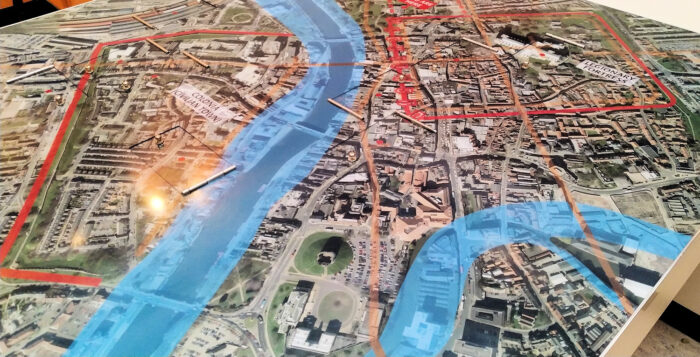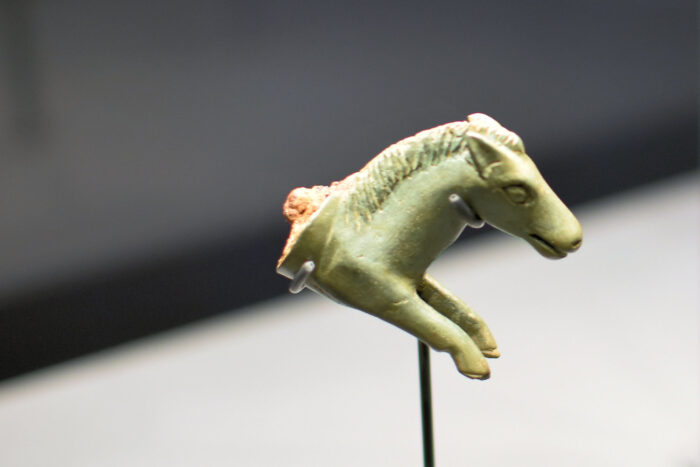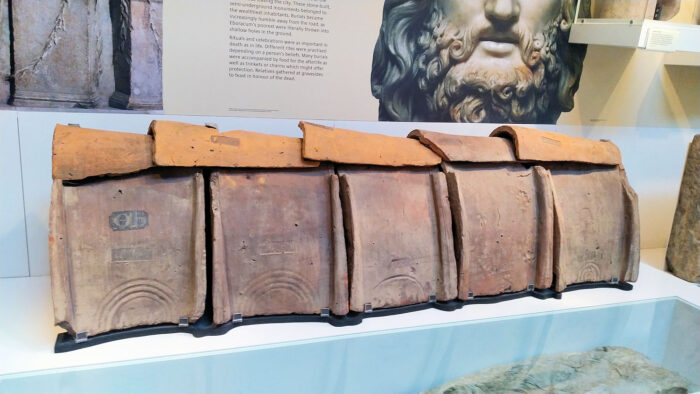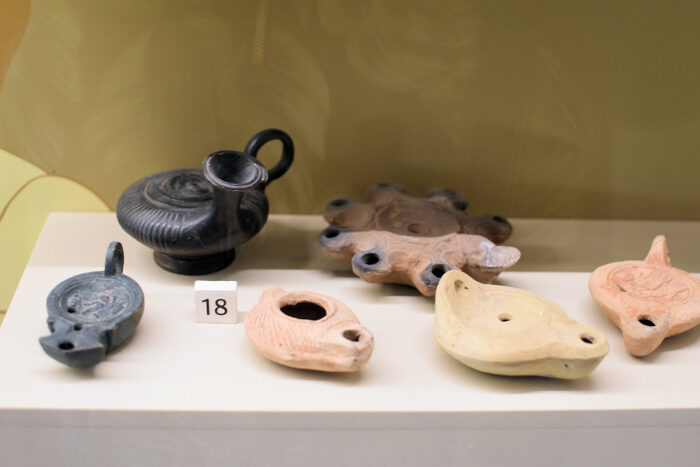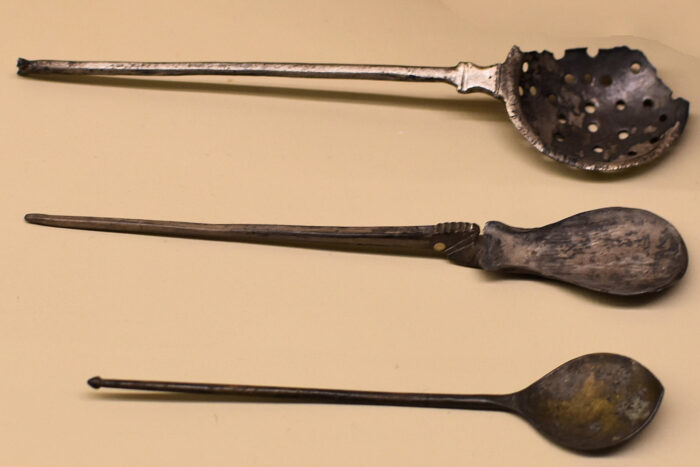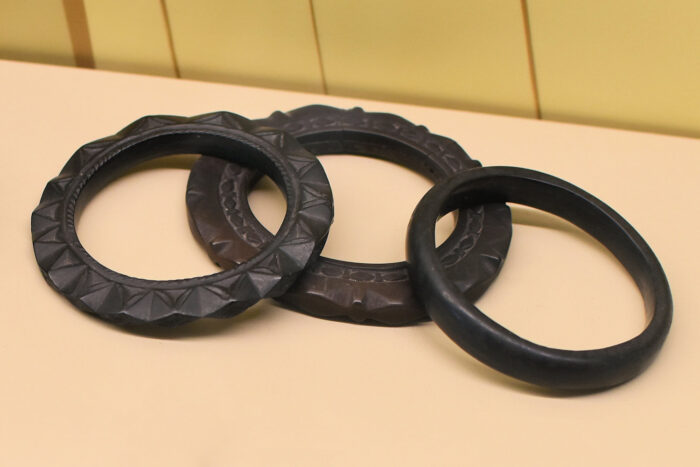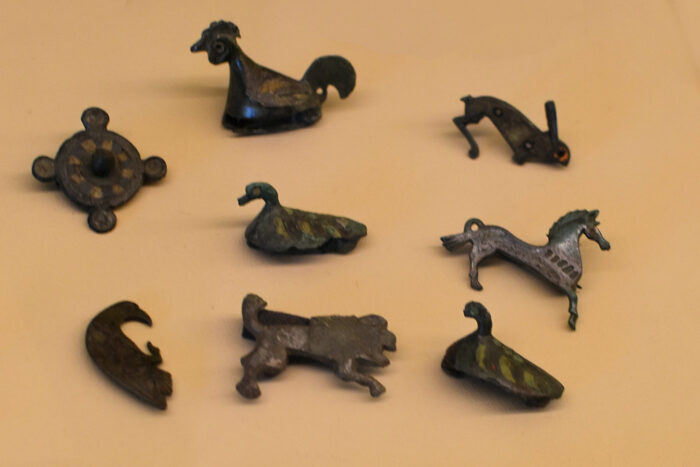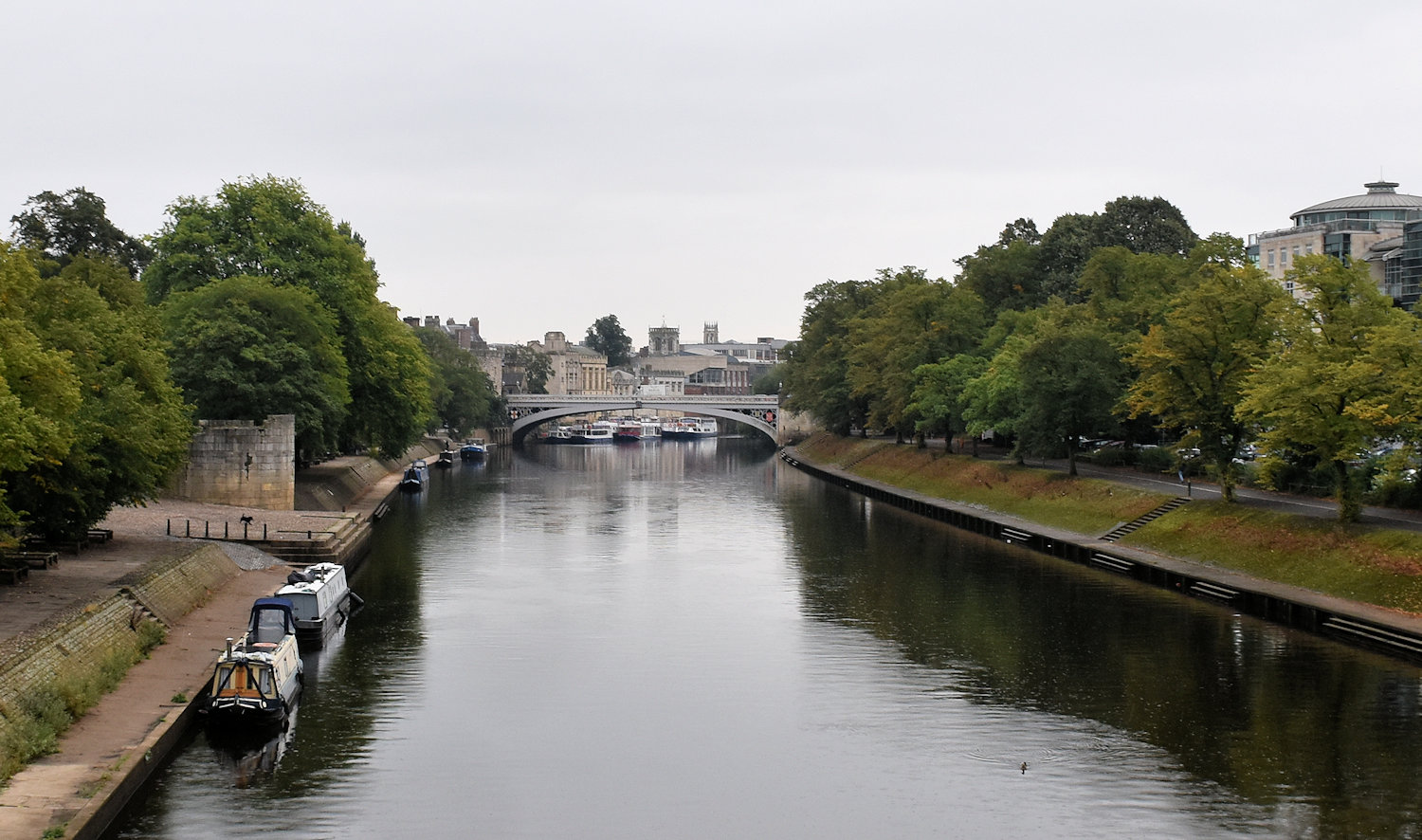The Yorkshire Museum in York has a lot of Roman artefacts (for reasons mnetioned below). Like any sensible museum, they are displayed in different rooms with themes (e.g People of York) but I’ve just pulled out some interesting ones to share. Unfortunately, like any sensible museum, the lighting is low so my selection of objects is further reduced by the those that photagraphed reasonably well. Text is italics is from the panels accompanying the objects.
Catimandua was queen of an Iron Age tribe called the Brigantes. Her tribal territory, which extended across the northern Britain, formed a buffer zone for the Roman Empire with the Picts to the north in Scotland. Her position was threatened by an open revolt led by her husband Venutius. The imperial authorities were forced to intervene. The Ninth Legion was sent north from Lincoln to quell the revolt. They constructed a permanent fortress at the confluence of two rivers and prehistoric route way. This fortress became Eboracum.
This aerial photo shows the location of the fortress overlaid on modern York, to give an idea of the size. The red square on the right marks the location of the fortress, now under the central city area. The “You Are Here” at the very top is the museum. On the left side of the river was the (civilian) town. Just above that is now the railway station. If I remember correctly, it was the site of a cemetery.
The intricate figurine shows a horse and rider, a representation of the god Mars. The horse wears an elaborate harness, and the rider a create helmet, tunic and pleated kilt. . . . The style of dress and the form of the figurine suggest it was made in Britain. Depicting Mars as a warrior on horseback was common across the province.
Handle of a key
Tiny, tiny sword and scabbard. Originally the sword came out.
Much of what’s known about Roman Britain comes from headstones. Being stone, they last and, as you can see with this one, they often had detailed pictures carved on them, which reveal a lot about things like fashions, furnishing and family relations. The caption for this one is:
Julia Velva
Julia Velva lived a relatively long life of 50 years. Aurelius Mercurialis, her heir, and his family would gather at this tombstone to celebrate her life on the anniversary of her death. They believed she could take part in the occasion.
The smaller one to the side is:
Hyllus the Foster Child
Boys were often adopted into upper-class families. This provided important men with a male heir without the expense of having lots of children.
Eboracum’s cemeteries contained some unusual coffins made from tiles. Roof tiles formed small lean-to covers over the body whilst floor tiles were cemented together in a more permanent way.
Oil lamps, but the caption is too blurry to read. They were filled with oil. A wick put in one hole soaks up the oil and when it’s lit, it burns (like a candle).
Copper alloy spoons and strainer.
(Museum person 1: “Is it brass? Or bronze? Or–”
Museum person1: “Put copper alloy.”)
Jet armlets.
A little blurry but these brooches are too cute not to share.
A Roman mosaic from the late 3rd to 5th century found during drainage works is laid out on the floor so you can walk on it, if you take your shoes off. (See, a pink sock!)
